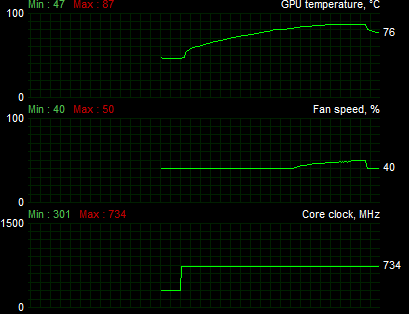Overclocking and Tweaking
Overclocking & Tweaking
As most of you with most videocards know, you can apply a simple series of tricks to boost the overall performance a little. You can do this at two levels, namely tweaking by enabling registry or BIOS hacks, or very simple, tamper with Image Quality. And then there is overclocking, which will give you the best possible results by far.
What do we need?One of the best tool for overclocking NVIDIA and ATI videocards is our own Rivatuner that you can download here. If you own an ATI or NVIDIA graphics card then the manufacturer actually has very nice built in options for you that can be found in the display driver properties.
Where should we go?
Overclocking: By increasing the frequency of the videocard's memory and GPU, we can make the videocard increase its calculation clock cycles per second. It sounds hard, but it really can be done in less than a few minutes. I always tend to recommend to novice users and beginners not to increase the frequency any higher then 5% of the core and memory clock. Example: If your card runs at 600 MHz (which is pretty common these days) then I suggest you don't increase the frequency any higher than 30 to 50 MHz.
More advanced users push the frequency often way higher. Usually when your 3D graphics start to show artifacts such as white dots ("snow"), you should back down 10-15 MHz and leave it at that. Usually when you are overclocking too hard, it'll start to show artifacts, empty polygons or it will even freeze. Carefully find that limit and then back down at least 20 MHz from the moment you notice an artifact. Look carefully and observe well. I really wouldn't know why you need to overclock today's tested card anyway, but we'll still show it ;)
All in all... do it at your own risk.
Above you can see the overclocked results for Resident Evil 5, same image quality settings as before, in 4xAA | DX10 mode. Slightly higher baseline results as we moved to a newr driver. Light blue is the default GTX 260, the upper dark blue line is the card tested today and in red you can spot it overclocked.
| Original | This sample | Overclocked |
| Core Clock: 567MHz | Core Clock: 680MHz | Core Clock: 735MHz |
| Shader Clock: 1242MHz | Shader Clock: 1512MHz | Shader Clock: 1597MHz |
| Memory Clock: 999MHz | Memory Clock: 1240MHz | Memory Clock: 1257MHz |
Now the card already is overclocked pretty significant at default -- you can take it up a little more though. You'll reach roughly 725~735 MHz on the core.

Memory -- the card is clocked at 2480 MHz at default. We could not get it stable at 2600 MHz though and had to settle for 2514 MHz. At this stage temperatures are slowly becoming an issue though. So it's wise to apply some additional fan RPM for cooling.
